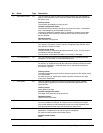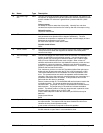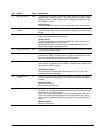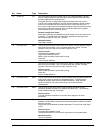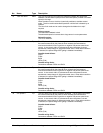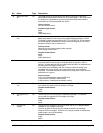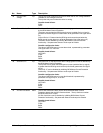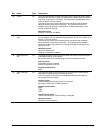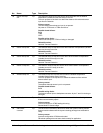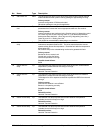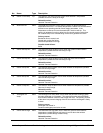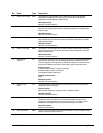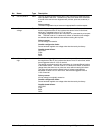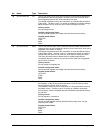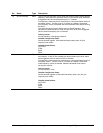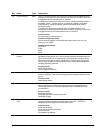
2-12
•
••
•
Chapter 2 Faults and Troubleshooting Innovation Series Medium Voltage GP Type - G Drives GEH-6385
No. Name Type Description
50
HtSink DS temp
low
Trip
The HtSink DS temp low trip fault occurs when the diode source heatsink
temperature (variable DS heat sink temp) is too low.
The main purpose of the fault is to detect the absence of the thermal sensor
input from the heatsink.
Primary causes:
The DS heatsink thermal sensor input is not present.
No power to TFBA card or TFBA card failure.
Possible board failures:
BICM
TFBA
CPFP
Possible wiring faults:
Thermal sensor input to TFBA is missing or damaged
Related functions:
Heatsink Thermal Protection
51 HtSink A temp low Trip
The HtSink A temp low trip fault occurs when heatsink A temperature (variable
Heat sink A temp) is too low.
Related functions:
Heatsink Thermal Protection
52 HtSink B temp low Trip The HtSink B temp low trip fault occurs when when heatsink B temperature
(variable Heat sink B temp) is too low.
Related functions:
Heatsink Thermal Protection
53 HtSink C temp low Trip
The HtSink C temp low trip fault occurs when when heatsink C temperature
(variable Heat sink C temp) is too low.
Related functions:
Heatsink Thermal Protection
54 Ambient temp low Trip The Ambient temp low trip fault occurs when the ambient temperature
(variable Bridge ambient temp) is too low.
The main purpose of the trip fault is to detect the absence of the ambient
thermal sensor input.
Primary causes:
The ambient thermal sensor input is not present.
Possible board failures:
BICM
Possible wiring faults:
The thermal sensor input to backplane connector J4 pins 7 and 8 is missing or
damaged.
55 AC line fuse blown Trip
The AC line fuse blown trip fault occurs when one of the fuses feeding the
diode source assembly opens.
Primary causes:
Loss of I24 supply on CTBC feeding this string .
Shorted diode in source bridge.
56 DB resistor
overload
Trip The DB resistor overload trip fault occurs when the dynamic braking resistor
thermal model indicates that the dynamic braking package has exceeded its
rating.
Primary causes:
Incorrect configuration of DB thermal model.
DB resistor package has not been sized correctly for application.



